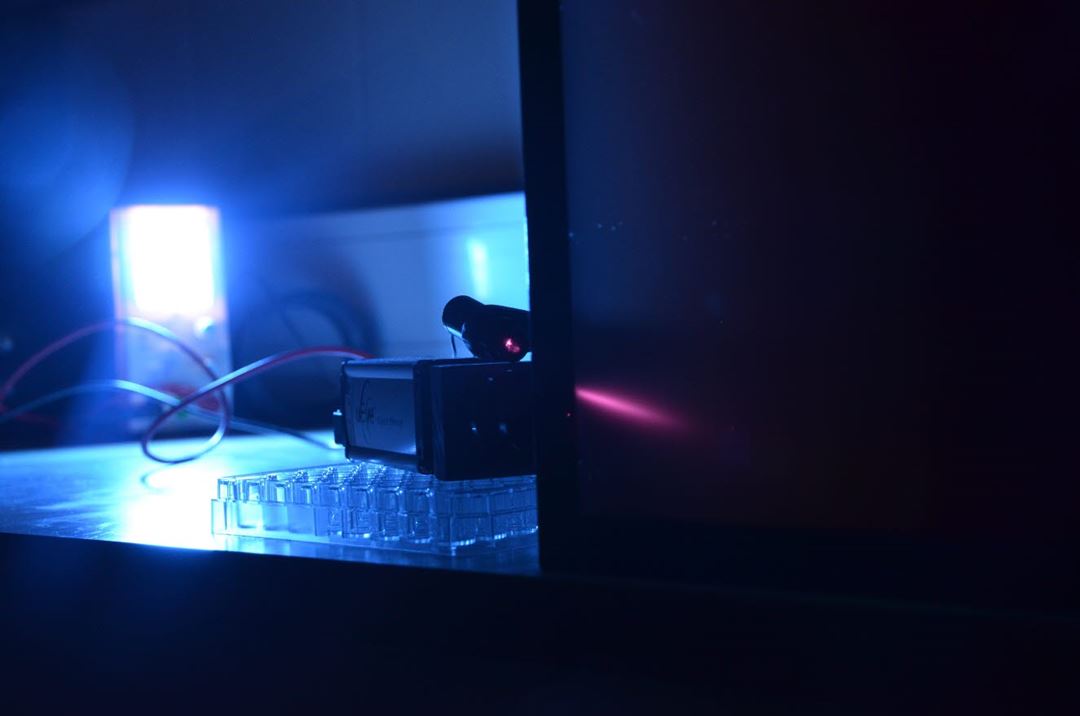Automation of this process has several advantages; it frees human resources, it provides the ability to look at trends in frequent, continuous measurements, and eliminates the need to transport a sample from culture to the measuring equipment. Additionally, the measurement can be performed on-line, and hence easily be included in automatic control of the culture.
Using IR laser and machine vision for biomass measurements
The most common method for measuring biomass is the use of optical density as a turbidimetric measurement. An increase in the biomass will cause a change in the haziness (turbidity) in the water, and a quantifiable measure of this can be calibrated against biomass. (This assumes that other factors affecting water turbidity are neglectable.) Most systems commercially available are inflexible, and can hardly be used for purposes other than this specific measurement.
SINTEF is working on a system that uses machine vision, i.e. images from a digital camera, as a basis. The images from the camera can therefore be used for more than just turbidity measurements, if desired. To provide a measure of the turbidity of the water, a infra-red laser beam is sent through the water, towards a reflector. The camera takes a picture of the reflection, and the image is analyzed. The size and intensity of the reflected beam indicates the turbidity in the water and thus, after calibration, even the biomass. IR is used to avoid the nonlinear absorption area of the light spectrum, a result from plankton photosynthesis. Experiments at SINTEF Sealab have shown a correlation between these parameters and parallel cell counts, using a traditional Coulter counter.
